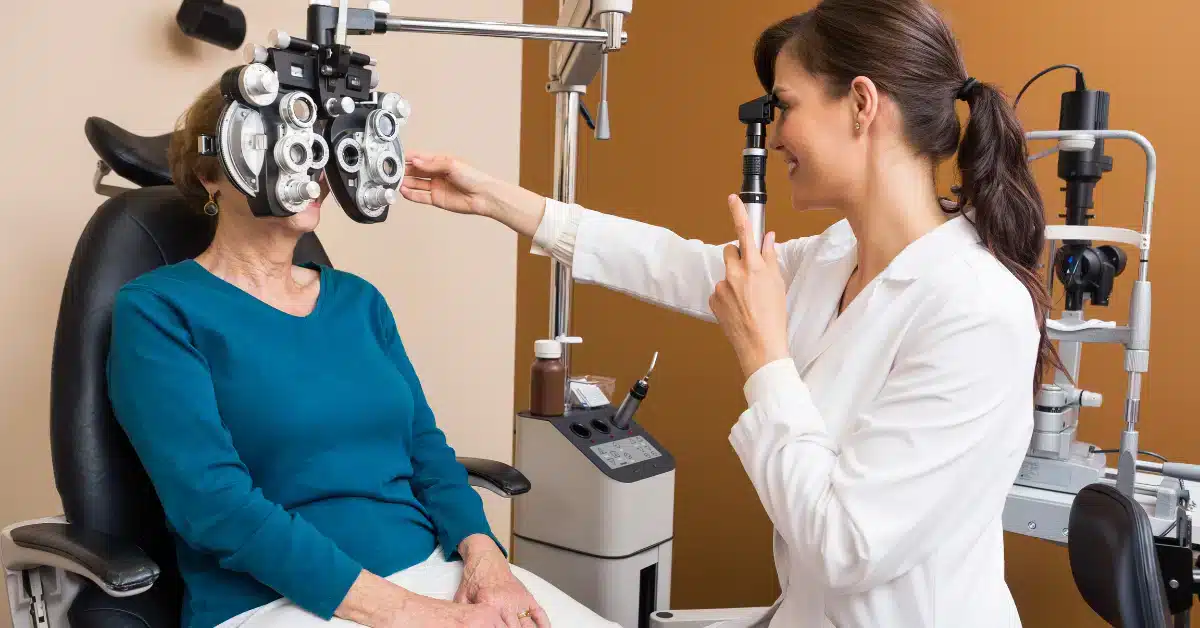Types of Lenses for Cataract Surgery: A Comprehensive Guide
Cataract surgery replaces the damaged natural lens with a synthetic lens.
With age and normal wear and tear, the present protein in the lens degrades. This causes blurred and hazy vision.
More than 24.4 million Americans aged 40 and older are affected with cataracts. Almost half of all Americans have cataracts by age 75.
The good news is that cataract surgery has a treatment option. It is one of the most popular surgical procedures.
Although cataract surgery sounds terrifying, it is a quick, painless outpatient operation.
Cataract surgery will improve your vision.
In this article, we will talk about different types of lenses after cataract surgery.
Types of lenses for Cataract surgery
As we know, cataract is a condition that develops over age.
Thus, the proteins in your eyes start to clump together and grow over the lens in your eye.
This protein is known as a cataract. The only way to treat cataracts is by removing the protein.
The growth of cataracts is on or around your lens. Your doctor must remove and replace your old lens with a new one.
Selecting the ideal intraocular lens is crucial since you can improve your vision if you do so.
You can correct simple vision problems, such as farsightedness, nearsightedness, and presbyopia.
There are four types of lenses in cataract surgery,

Monofocal Lens
Intraocular lenses (IOLs) are among the most consequential inventions in Ophthalmology.
Before intraocular lenses were invented, removing cataracts which are also known as Aphakia, made the patient highly hyperopic.
It was necessary to use convex glasses with high magnification. It helps to achieve decent distance and near vision. These glasses induced several optical distortions.
After extracapsular cataract excision, monofocal intraocular lenses are recommended for visual correction of aphakia.
These lenses have a single focal point and are designed to correct distant vision.
Multifocal Lens
Multifocal intraocular lenses (IOLs) can restore vision. It also allows patients to be spectacle-free after implantation, to the patient’s satisfaction.
As the objectives of cataract surgery are obtained, multifocal intraocular lenses (IOLs) technology is progressing.
Patients have higher expectations for their vision. They want to be spectacle-free after cataract surgery.
Multifocal intraocular lenses were created to improve the outcomes of cataract surgery.
It improves near vision by separating light into many foci.
This modifies the physiology of vision. It happens due to the light dispersion that occurs when light enters the eye.
Hence, visual symptoms such as halos, glare, and decreased contrast sensitivity may manifest.
Toric Lens
A toric lens is a contact lens-shaped in a particular way.
It is a regular contact lens that features a spherical surface. It resembles a slice of a beach ball.
In comparison, a torus is a geometric shape that resembles a donut. A toric lens resembles a section of this donut’s side.
Toric contact lenses have divergent refractive or focusing capabilities. It is in horizontal and vertical orientations because of its unique form.
The refractive index increases or drops when one moves around the lens.
Monovision Lens

People over 40 will experience the start of presbyopia (aging eye).
This is the eye’s natural aging process, making it more challenging to focus on close things.
Monovision contact lenses are one of the numerous typical ways that patients correct for presbyopia as they age.
To address the difficulties in changing focus between close and distant, one contact lens is prescribed for near vision and the other for distance.
Monovision contact lenses require a period of adaptation. It is essential to consider when beginning or switching to contact lenses.
Your brain adapts naturally to this arrangement, in which each eye is devoted to a specific task.
Conclusion

While there are many types of lenses to choose. But only some kinds of lenses are suitable for everyone.
The best way to determine which IOL is best for you is to get help from your eye specialist.
They will evaluate your eyes and help you with the best for your situation.
Frequently Asked Questions
WowRx uses only high-quality sources while writing our articles. Please read our content information policy to know more about how we keep our content reliable and trustworthy.







2 comments on “Types of Lenses for Cataract Surgery: A Comprehensive Guide”
Charvi Jain
Really useful content! One thing I’m still unsure about is how quickly patients can adapt to new lenses after surgery. Are there any tips you could provide for a smoother transition period?
Harman Kaur
Hi Charvi,
Thank you for your positive feedback on the article!
Adjusting to new lenses after cataract surgery can vary from person to person. Most people start seeing improvements within a few days to weeks, but it can take longer to fully adapt, especially with multifocal lenses. To make this transition smoother, follow your doctor’s post-surgery care instructions and be patient. Gradually increase your activities and contact your eye care provider if you have any concerns or persistent issues. Hope this helps!